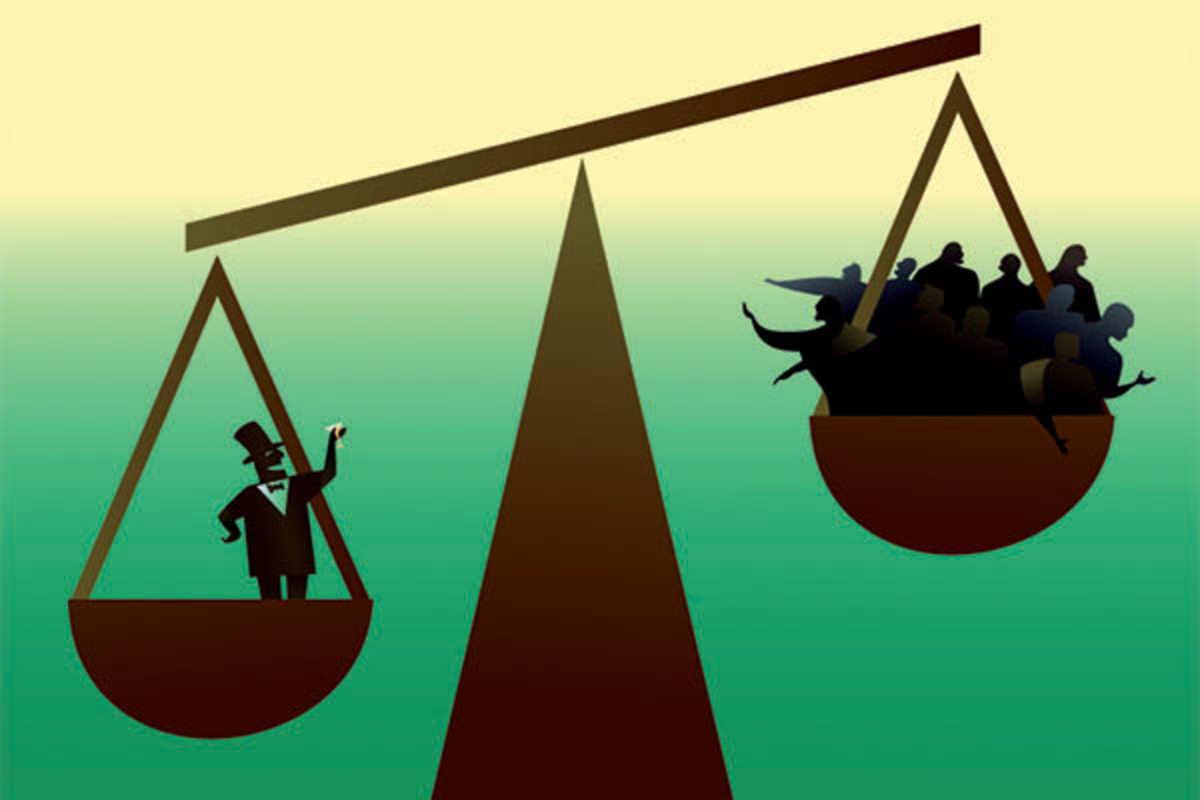Imagine two children, both growing up in different neighborhoods. One, raised in a bustling city with museums, theaters, and libraries at their fingertips, readily engages in discussions about art, literature, and history. The other, surrounded by limited cultural exposure, finds solace in a world of video games and social media. Does their differing social environment predetermine their future success? The answer, unfortunately, lies in a complex concept known as “cultural capital,” which powerfully shapes our destinies and perpetuates social inequality.

Image: psmag.com
Cultural capital, coined by French sociologist Pierre Bourdieu, refers to the non-financial assets that individuals possess, often acquired through upbringing and social environment. These assets include knowledge, values, skills, and tastes that are highly valued within a particular society, often by institutions like schools, universities, and the workforce. In essence, cultural capital acts as a form of currency, granting individuals access to opportunities and resources that contribute to their social mobility.
The Mechanics of Cultural Capital
Imagine a high-school student applying for a prestigious university. This student, raised in a home filled with books, art, and intellectual discussions, effortlessly navigates interviews and essays, showcasing a deep understanding of literature, current affairs, and analytical thinking. This student possesses a rich cultural capital, making them a highly desirable candidate. Their background grants them an edge over others who might lack that same level of exposure, potentially perpetuating existing inequalities.
Cultural capital can manifest in various forms:
- Embodied Cultural Capital: This refers to the skills and knowledge ingrained through socialization and education. It includes things like speaking multiple languages, possessing a sophisticated vocabulary, understanding complex literary works, or displaying a keen eye for art and design.
- Objectified Cultural Capital: This refers to material possessions that symbolize cultural knowledge and taste. Examples include books, art collections, musical instruments, or even luxurious travel experiences.
- Institutionalized Cultural Capital: This represents the credentials and qualifications that are formally recognized by institutions. A college degree, a prestigious academic award, or a professional license fall under this category.
How Cultural Capital Reproduces Inequality
At its core, cultural capital perpetuates inequality by creating a cycle of advantage where those who already possess it are favored and those who lack it are disadvantaged. Here are a few key ways it plays out:
- Educational Attainment: Children from privileged backgrounds are more likely to be exposed to a broad range of cultural experiences, including museum visits, theatrical performances, and travel opportunities. Such exposure contributes to their development of vocabulary, critical thinking skills, and intellectual curiosity. While lacking such experiences, children from disadvantaged backgrounds may find themselves struggling in academic settings, reinforcing an existing inequality.
- Job Market Advantage: In many professions, certain cultural skills and knowledge are implicitly valued. Professionals may rely on shared allusions to literature, historical events, or artistic movements to build rapport and demonstrate intellectual competence. Individuals lacking this cultural capital may struggle to establish themselves in these fields, further contributing to social stratification.
- Social Networks: Cultural capital often facilitates the development of social networks, connecting individuals with like-minded peers, mentors, and potential employers. These networks can provide a valuable support system, opening doors to job opportunities, funding, or influence.
- Hidden Curriculum: Schools and universities, though often perceived as neutral institutions, are steeped in cultural norms and values that privilege certain types of knowledge and behaviors. The “hidden curriculum” – the implicit norms and expectations within educational institutions – can favor students with a particular cultural background, inadvertently disadvantageing those from other backgrounds.
Breaking the Cycle: Strategies for Equitable Cultural Capital
Recognizing the detrimental impacts of cultural capital on inequality is the first step towards addressing it. But how can we create a more equitable society? Strategies for disrupting the cycle involve:
- Expanding Access to Cultural Experiences: Invest in community-based programs that provide access to museums, theaters, libraries, and cultural enrichment activities, particularly in underserved communities. Initiatives such as free museum days, subsidized art classes, and community theater performances can democratize cultural experiences.
- Reform Education: Challenge the traditional “hidden curriculum” by promoting diversity in course material, fostering inclusive classroom spaces, and creating culturally relevant learning experiences. This includes incorporating perspectives from marginalized communities into the curriculum and valuing cultural knowledge from a wider range of backgrounds.
- Foster Intergenerational Dialogue: Encourage conversations across generations and socioeconomic backgrounds to bridge cultural gaps and promote mutual understanding. Initiatives like community forums, mentoring programs, and intergenerational learning activities can facilitate meaningful connections and knowledge sharing.
- Promote Cultural Literacy: Encourage the development of cultural literacy by exposing individuals to diverse perspectives, narratives, and artistic expressions. This can be achieved through media literacy campaigns, community storytelling events, and access to materials reflecting a wider range of cultural experiences.

Image: www.studocu.com
Inequality Is Reproduced Through Cultural Capital Because
Conclusion
The concept of cultural capital sheds light on the insidious ways in which social inequality is reproduced, highlighting the hidden advantages that some individuals enjoy based purely on their upbringing and social environment. It is a powerful reminder that true social progress requires a conscious effort to dismantle these systems and create a society where opportunities are not predetermined by birth or background. By promoting equity in access to cultural resources, fostering intergenerational dialogue, and challenging the biases embedded in our institutions, we can strive toward a future where cultural capital is a source of empowerment rather than a tool of exclusion.






